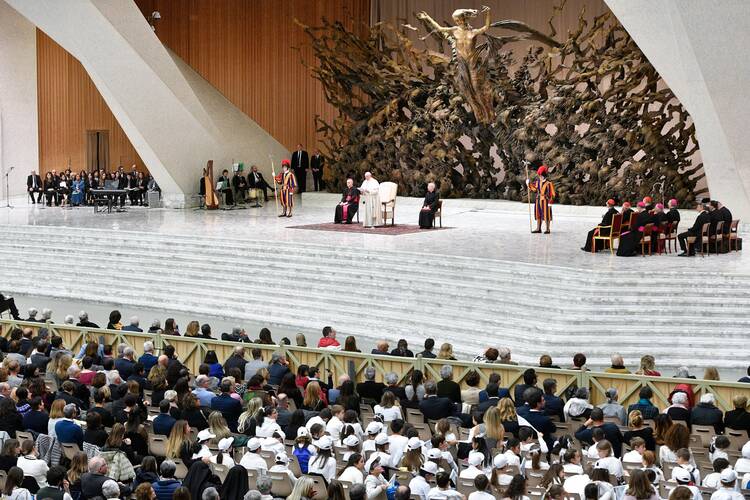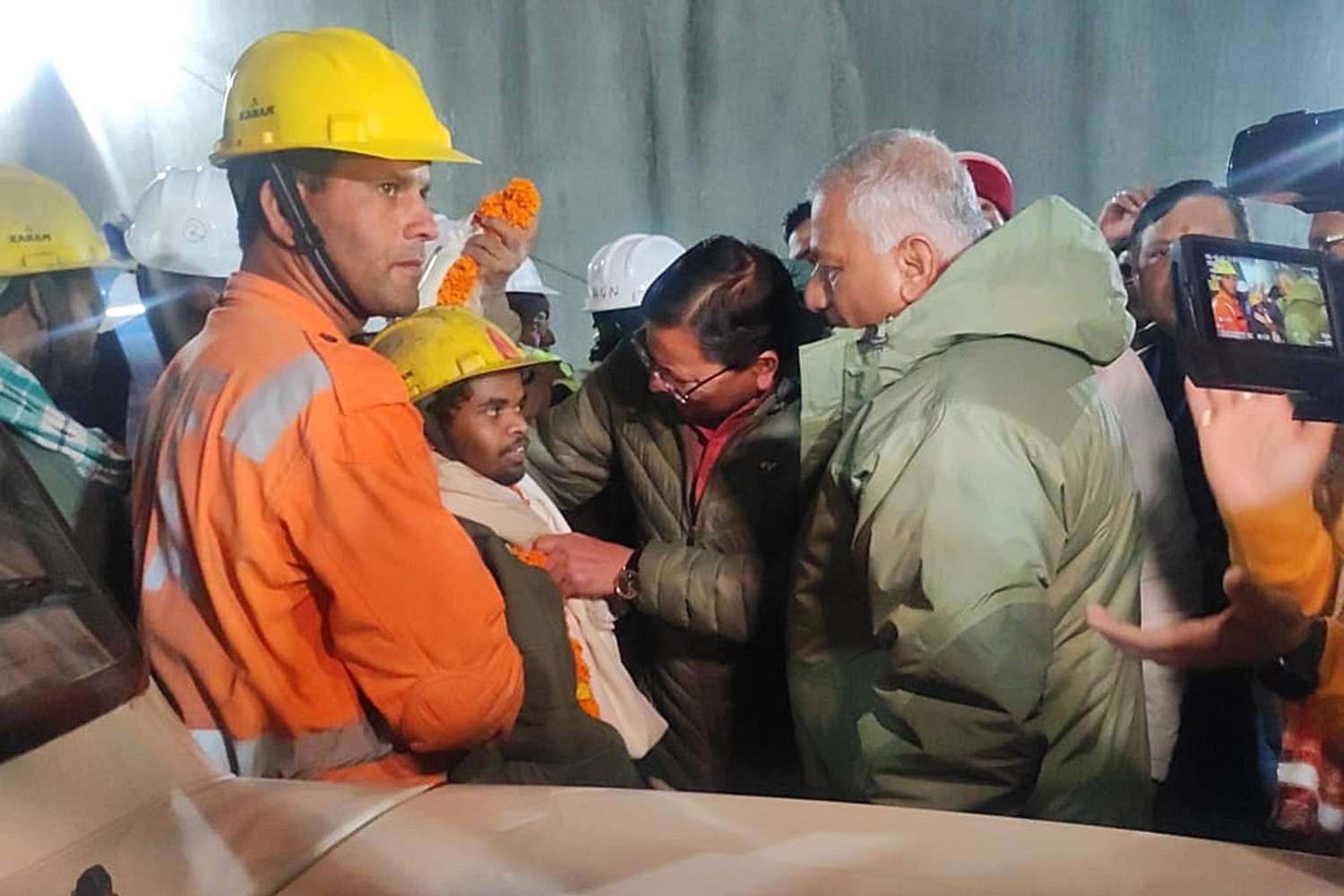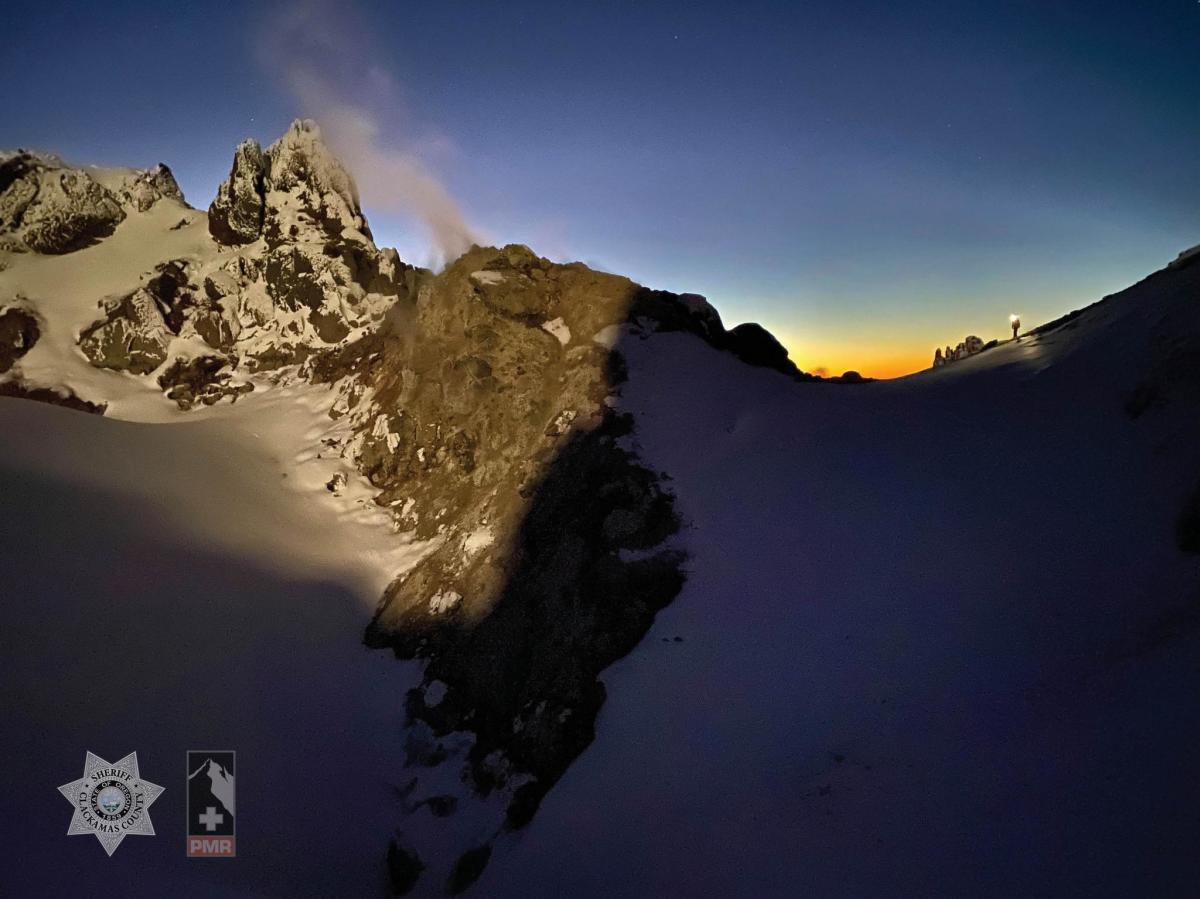“The Resurrection” summarizes Catholic responses to nuclear war threats
The picture of a colossal sculpture in the Vatican’s Paul VI audience hall stunned Twitter users recently. “The Resurrection” by the sculptor Pericle Fazzini shows Jesus emerging from the explosion of a nuclear bomb. The bronze statue also stands high to present Catholic responses to nuclear war threats in the 1970s. It symbolizes the Catholic struggle against calls for annihilation.
“The Resurrection” statue of Jesus makes waves across the world. Not just that, but it also cherishes its place in different forms and presentations. Adding to that, many artists have also turned their creative focus. Apart from that, many celebrated names have also taken an untreaded path to make their creations stand out. Therefore, one can cherish the statue shimmering in different themes and light. That also keeps the spirit of the work alive. But many of them take it to another level and height. “The Resurrection” by the sculptor Pericle Fazzini cherishes a unique place in the domain.
It stirs the magic of admiration. But it shone in the limelight when its picture surfaced in the Twitter world. The Vatican’s Paul VI audience hall celebrates itself with the presence of the iconic “The Resurrection”. Sharing it with Twitteratis, a tweet said, “i’m sorry is this a normal thing the pope stands in front of.” Not just that, the tweet also raked in more than 172 thousand likes. Standing out, it shows Jesus emerging out of the explosion of a nuclear bomb.
It also cements its place with dimensions: 66 feet by 23 feet by 10 feet. Not just that, but it also gets to life with wilted bronze color. Diving into that part, one can also take note of knots around Christ’s feet. The statue also says a lot about the Catholic struggle against nuclear war threats. One can trace its commissioning to 1970 and its inauguration to 1977.
It began when Pope John XXIII declared open the Second Vatican Council. It happened a few days before the Cuban Missile Crisis. He said, “With your hand on your conscience may each one hear the anguished cry which is raised to the skies from all parts of the earth, from the innocent children to the elderly, from the people of the communities: Peace, peace!” Not just that, he also went ahead to issue “Pacem in Terris” to ridicule the use and possession of nuclear bombs.
Apart from that, he also said, “Hence justice, right reason, and the recognition of man’s dignity cry out insistently for a cessation to the arms race. The stock-piles of armaments which have been built up in various countries must be reduced all round and simultaneously by the parties concerned. Nuclear weapons must be banned.”
John XXIII’s successor (Pope Paul VI) commissioned it. Its commissioning also came under debate for 7 years. It also made a note of anti-nuclear Catholic activism. The commissioning of the statue fell in line with activism. The activist group Plowshares Eight stormed the General Electric factory in King of Prussia, Pa. They went ahead to protest the company’s engagement in nuclear weapons. Not just that, they also poured blood.
Carl Kabat, O.M.I. (a member of the group) said, “Christ broke the law. He overturned the tables of the moneychangers and took charge of the temple. He cured on the Sabbath, He plucked grain on the Sabbath.” Adding to that, he said, “When the state puts such resources into weapons of destruction, it’s a healthy thing for Christians to be in trouble with the state.”
The activists resorted to civil disobedience to voice their concerns. Martha Hennessy (anti-nuclear activist and granddaughter of Dorothy Day) said, “We are not to commit murder, nevermind mass murder with these modern weapons. And the promotion of peace is certainly part of what we are called to do.” Thus, one can say that the statute summarizes the narrative.






